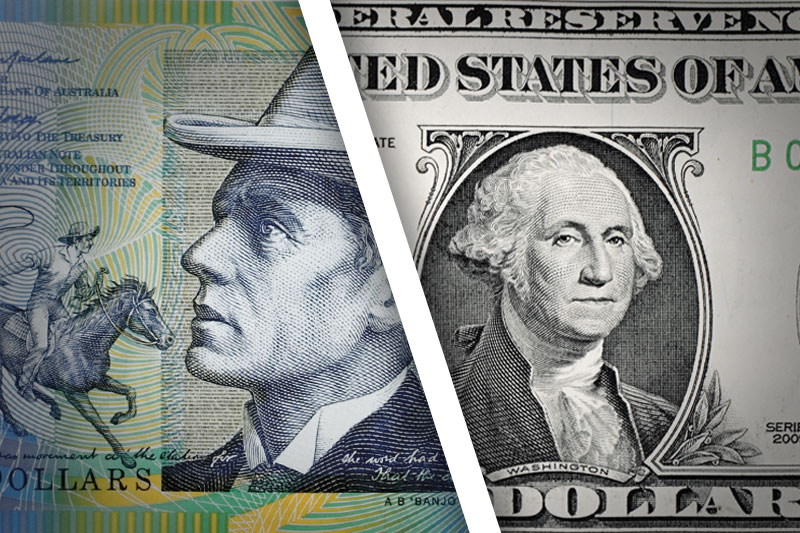Investing.com - The Australian dollar lost ground against its U.S. counterpart in Tuesday’s Asian after a weaker-than-expected Australian trade balance report.
In Asian trading Tuesday, AUD/USD slipped 0.11% to 1.0493. The pair was likely to find support at 1.0450, the low of January 3 and resistance at 1.0523, the high of January 2.
Australia’s trade balance fell more-than-expected last month, according to a report released earlier today. n a report, Australian Bureau of Statistics said that Australia’s trade balance fell to a seasonally adjusted -2.64B, from -2.44B in the preceding month whose figure was revised down from -2.09B. Analysts had expected Australia’s trade balance to fall to -2.30B last month.
The Aussie dollar could be in for more downside due to traders’ view of the currency as a risk on play. Earlier today, a report from HSBC said the Australian dollar could be under pressure this year due to concerns about the global economic outlook and domestic factors.
Those domestic factors likely include the expectation that the Australian will not meet its objective of budget surplus for the current fiscal year due to declining mining revenue.
HSBC noted Australia’s mining has long supported the dollar there and in the face of declining tax revenue from the materials and mining sectors, the Aussie dollar could be face new hurdles to further appreciation.
The bank also noted the Australian dollar was one of the worst-performing developed market currencies last year and that lower foreign direct investment levels could hamper the currency as well.
The upside is that iron ore prices have been rising recently and the Chinese economy has been improving, two factors that could buoy the Aussie dollar.
Elsewhere, AUD/JPY fell 0.27% to 91.97 while AUD/NZD lost 0.04% to 1.2544. EUR/AUD climbed 0.21% to 1.2517.
In Asian trading Tuesday, AUD/USD slipped 0.11% to 1.0493. The pair was likely to find support at 1.0450, the low of January 3 and resistance at 1.0523, the high of January 2.
Australia’s trade balance fell more-than-expected last month, according to a report released earlier today. n a report, Australian Bureau of Statistics said that Australia’s trade balance fell to a seasonally adjusted -2.64B, from -2.44B in the preceding month whose figure was revised down from -2.09B. Analysts had expected Australia’s trade balance to fall to -2.30B last month.
The Aussie dollar could be in for more downside due to traders’ view of the currency as a risk on play. Earlier today, a report from HSBC said the Australian dollar could be under pressure this year due to concerns about the global economic outlook and domestic factors.
Those domestic factors likely include the expectation that the Australian will not meet its objective of budget surplus for the current fiscal year due to declining mining revenue.
HSBC noted Australia’s mining has long supported the dollar there and in the face of declining tax revenue from the materials and mining sectors, the Aussie dollar could be face new hurdles to further appreciation.
The bank also noted the Australian dollar was one of the worst-performing developed market currencies last year and that lower foreign direct investment levels could hamper the currency as well.
The upside is that iron ore prices have been rising recently and the Chinese economy has been improving, two factors that could buoy the Aussie dollar.
Elsewhere, AUD/JPY fell 0.27% to 91.97 while AUD/NZD lost 0.04% to 1.2544. EUR/AUD climbed 0.21% to 1.2517.
